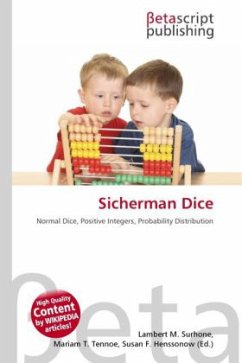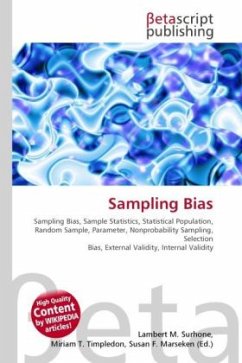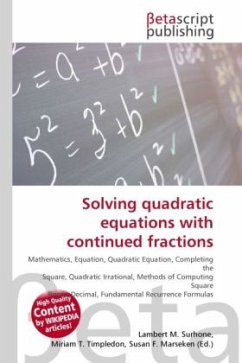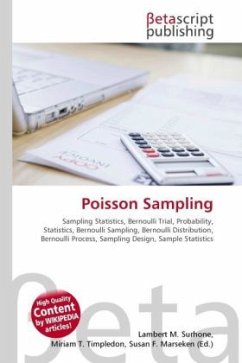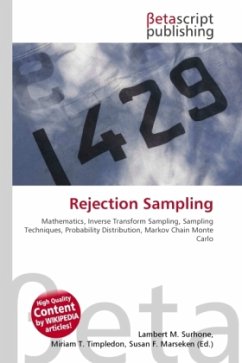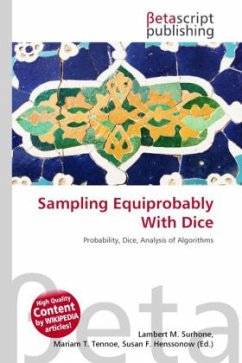
Sampling Equiprobably With Dice
Versandkostenfrei!
Versandfertig in 6-10 Tagen
23,99 €
inkl. MwSt.

PAYBACK Punkte
12 °P sammeln!
High Quality Content by WIKIPEDIA articles! An illustrative example of how to compute with the probabilities associated to dice, as well as the analysis of algorithms, is the following problem. Suppose you have a group of 19 individuals and an ordinary six-sided die. Your task is to use that die to select one of these individuals equiproabably, i.e. so that all individuals are equally likely, having probability 1/19 of being selected, and using as few rolls of the die as possible. This is an example of the more general problem of using dice to sample a range equiprobably, where the range has n...
High Quality Content by WIKIPEDIA articles! An illustrative example of how to compute with the probabilities associated to dice, as well as the analysis of algorithms, is the following problem. Suppose you have a group of 19 individuals and an ordinary six-sided die. Your task is to use that die to select one of these individuals equiproabably, i.e. so that all individuals are equally likely, having probability 1/19 of being selected, and using as few rolls of the die as possible. This is an example of the more general problem of using dice to sample a range equiprobably, where the range has no common factor with the number of faces of the die, which is in turn equivalent to one of the key problems of the algorithmics of random number generators. This is because with today's hardware, even if a random number generator samples a physical source, it will need to load the sample into a discrete register consisting of a finite number of bits. Hence the question arises of how to sample equiprobably from a range not being a power of two using a random number generator that returns some fixed number of random bits.



